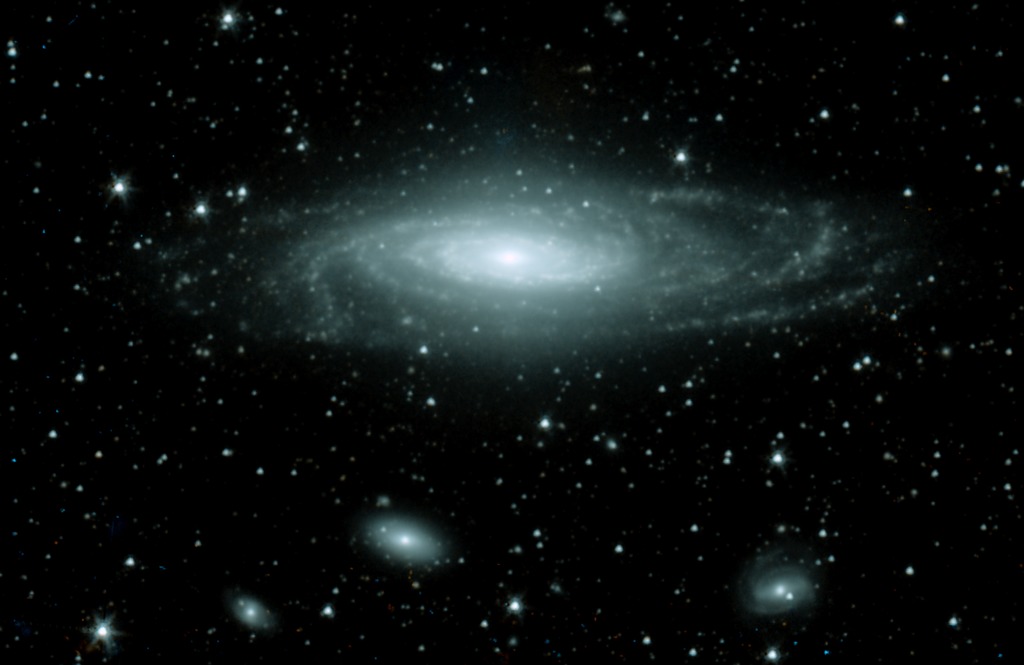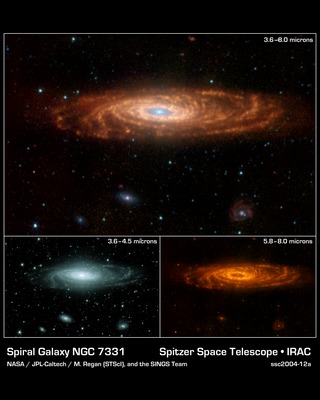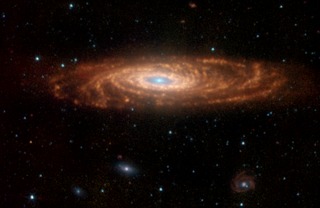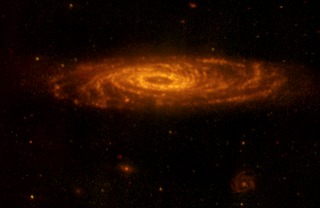
Credit: Credit: NASA/JPL-Caltech/M. Regan (STScI), and the SINGS Team
Observation • June 28th, 2004 • ssc2004-12a2
ssc2004-12a2
This infrared image from NASA's Spitzer Space Telescope has captured a nearby spiral galaxy that resembles our own Milky Way. The galaxy, known as NGC 7331 and sometimes referred to as our galaxy's twin, is found in the constellation Pegasus at a distance of 50 million light-years. This inclined galaxy was discovered in 1784 by William Herschel, who also discovered infrared light.
The image, measuring 12.6 by 8.2 arcminutes, was obtained by Spitzer's infrared array camera and shows emissions wavelengths of 3.6 microns (blue) and 4.5 microns (green). These wavelengths are roughly 10 times longer than those seen by the human eye. The infrared light seen in this image comes mainly from stars, particularly ones that are older and cooler than our Sun.
Three other galaxies are seen below NGC 7331, all about 10 times farther away. From left to right are NGC 7336, NGC 7335 and NGC 7337. The blue dots scattered throughout the image are foreground stars in the Milky Way.
The Spitzer observations of NGC 7311 are part of a large 500-hour science project, known as the Spitzer Infrared Nearby Galaxy Survey, which will comprehensively study 75 nearby galaxies with infrared imaging and spectroscopy.
About the Object
- Name
- NGC 7331 • UGC 12113
- Type
- Galaxy > Type > Spiral
- Distance
- 49,000,000 Light Years
- Redshift
- 0.002722
Color Mapping
| Band | Wavelength | Telescope |
| Infrared | 3.6 µm | Spitzer IRAC |
| Infrared | 4.5 µm | Spitzer IRAC |
| Infrared | 5.8 µm | Spitzer IRAC |
| Infrared | 8.0 µm | Spitzer IRAC |
Astrometrics
- Position ()
- RA =22h 37m 8.4s
- Dec = 34° 29' 3.8"
- Field of View
- 12.6 x 8.2 arcminutes
- Orientation
- North is 101.1° left of vertical







